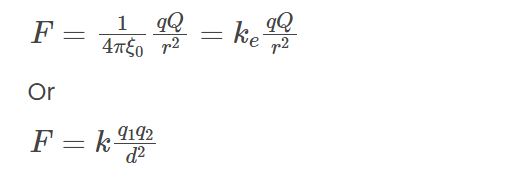What Is Electrostatics?
Electrostatics is a branch of physics that deals with the properties of slow-moving electric charges. Electrostatic phenomena can be described with the help of Coulomb’s Law.
Coulomb’s Law of Electrostatics
We begin with the magnitude of the electrostatic force between two point charges that is Q and q. We can call q as the test charge and Q as a source charge. If r is the distance between the two, the formula can be:
Electric Field
Electric field lines will help you to visualise the electric field. Field lines begin with a positive charge and end with a negative charge.
We show the charge with q or Q and the smallest unit charge is 1.6021 x 10-19 Coulomb (C).
Positively Charged Particles
When it comes to positively charged particles, the number is positive ions is more than that of negative ions. To neutralise this, electrons from the surroundings come to this particle until the number of protons and electrons becomes equal.
Negatively Charged Particles
Here, the number of electrons is more than that of protons and to neutralise that electrons move to the ground as protons cannot cannot come to negative charges particles.
Neutral Particles
Neutral particles as the name suggests, contain an equal number of electrons and protons.
Examples Of Electrostatics
- Photocopier and laser printer operation
- The attraction of plastic wrap to your hand after you remove it from the package.
FAQ’S
1. How does electrostatics work?
Electrostatics works on the phenomenon of Coulomb’s law. Students can check the formula and the definition to understand the workings of electrostatics.
2. Why electrostatic force is called a central force?
Since the force acts along the line joining two charges, this is the reason why electrostatic force is called a central force.
Students can now easily learn about the concept from this article and understand the concept of Electrostatics more easily.
Related Links
Maxwell’s Equation: Definition, Laws, Explanation And Formulas!
Refraction Of Light: Definition, Laws, Applications And FAQs

Comments
All Comments (0)
Join the conversation